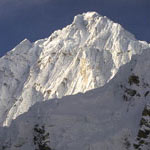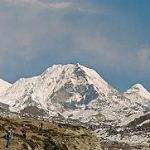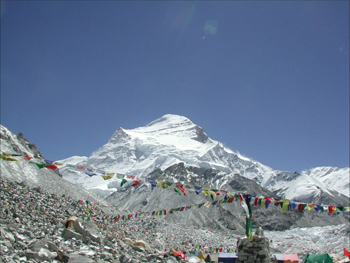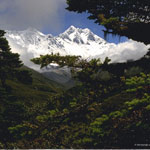Everest Easy Trek

Trip info
Duration: 12 days
Trip Destination: Everest region
Mode of accommodation on trek: Tea house
Max. Altitude: 3800 M
Group size: Minimum Two
Activities: Trekking
Mode of Travel: Domestic Flight
Trip Starts & Ends at: Lukla
Average walks Per Day: 4/6 Hours
Trip Grade: Moderate
Everest Easy Trek is one of the shortest treks in Everest region. Everest Easy Trek is not so difficult trekking as other. It is especially for those who have a dream to see the top of the world and have less time or too old or who cannot walk much distance. Everest Easy Trek is available for all season but we recommend to visit at the best time that is from March to May and September to November.
Supplier of services: ClimberCA International Consortium. About Us
https://t.me/ClimberCA - telegram
WhatsApp / Viber +7966 065-53-44
e-mail -
Note: ClimberCA offers to you the best service & the firm prices of all kind of services we offer on our web-pages. Some services, which we offer to you, are truly unexampled.
You can get chance to see a beautiful view of the top of the world. Here you can enjoy in the combination of spiritual, cultural and natural beauty of the Everest region of Nepal. Everest Trek begins from the Lukla which is at 2828m/9278 feet above sea level and you will pass through the several Sherpa villages like Namche bazaar, Phakding, Khunde village, khumjung village, Phortse village and many other small villages. There are many helpful and caring Sherpa villages. Then you can also have an absolutely thrilling and stunning view of others mountains like Lhotse, Amadablam, Nuptse , Thamserku, Kangtega, Kusum Kangaru, Malanphulan, Ombigaichan, Tawoche and many more… in the morning time.
Itinerary
Day 01: Arrival in Kathmandu
After you arrive in TIA (Tribhuwan International Airport), Kathmandu you will meet our representative in the airport who will transfer you to your hotel in Kathmandu. Overnight at hotel
Day 02: Kathmandu City Tour
After breakfast, you start your visiting sites tour in Kathmandu valley. First you will visit Swoyambhunath, from where you can see the beautiful view of the entire Kathmandu valley. Swoyambhunath is the oldest temple of Nepal which is the holly place for Buddhism.Meanwhile you will be guided along the historical places around Patan, like Patan Durbar Square, Mahaboudha Temple, Kumbeshwor temple, Krishna Temple, Golden Temple, etc and also you will get chance to visit the handicraft centre in Patan. After lunch,we drive to visit Boudhanath and Pashupatinath temple.First you will visit pasupatinath temple ,pasupatinath templeis one of the most significant hindu temple lies on the bank of bagmati temple.After the beautiful view on the pasupatinath temple we lead towards boudhanath,which is also one of the holiest buddist site of Nepal.Then we lead towards Bhaktapur, Bhaktapur is the ancient Newar(local people of bhaktapur) town of Nepal.and we can visit the places like Lion Gate, Golden Gate, Art Gallery, Statue of King Bhupatindra, Nyatapola Temple and fifty-five windowed Malla Palace etc which are the living prides of Bhaktapur and you will tour around all these places.
Day 03: Katmandu to Lukla - Trek to Phakding (2700m.)
After breakfast you move towards Lukla (9,000 feet/2,743 meters) by plane from the capital city. Lukla is our first base camp where you began our trek. Later we further hike for the short time to the place named Phakding which is about 8000ft. (2438m)
Day 04: Phakding to Namche Bazaar (3440 meters)
Today you began our short trip from Phakding to namche bazaar (11,300 feet/3,444 meters) which is also the gateway to the top of the world, Mt.Everest (8848m).
Day 05: Acclimatization in Namche (3440m.)
For acclimatization purposes we spend a second night in Namche Bazaar. After resting in the morning you will hike to the syanboche for lunch, where you will have a first heart touching view of Mt Everest.
Day 06: Namche to Thyangboche Monastery (3860m.)
Then you further start our trek to Thyangboche (12,670 feet/3,862 meters) which is the largest Buddhist people living area in the whole district. You will reach there early afternoon so that we can roam around the monastery and see monks praying
Day 07: Rest at Thyangboche
In this day you rest at Thyangboche and roam around there. And also you can see the awesome beauty of Mt. Everest (8848m.) and its neighboring peaks Like Ama Dablam, Lhotse, Nuptse etc.
Day 08: Thyangboche to Namche (3440m.)
In this day you will leave from Thyangboche and have a short to trek to Namche Bazaar.
Day 09: Namche to Lukla (2840m.)
In this day you will trek again from Namche to Lukla.
Day 10: Flight to Kathmandu
You will take a flight from Lukla to Kathmandu.
Day 11: Leisure day in Kathmandu.
You can roam around Kathmandu valley or you can do shopping.
Day 12: Departure.
After breakfast we will transfer you to Tribhuvan International airport (TIA) three hour before your flight you have to reach there
Cost
Cost includes
- All Necessary transportation
- 3 meals per day during the trekking (B L D) including Tea or coffee
- Accommodation on Tea House ( Lodge ) or provided Tents during the trek as mentioned in the trek type
- Accommodation in *** to ***** stars Hotel at Kathmandu
- High Experienced Government Licensed Guide and Necessary porter during the trek.
- All Government local Taxes
- National park Fees
- (TIMS) Trekkers Information Management System
- First Aid kit, general equipment for Porter
- Guide and porter salary
- All Filed Staff insurance during the trekking and extra services according to the guest per demand.
Cost excludes
- Trekking equipment
- Any personal expenses such as Alcoholic Beverage drinks, phone and Laundry
- Emergency Rescue and Travel Insurance, Trip Cancellation cost accident or Health, Loss Theft or Damage and personal effects. We advise you to take out personal Travel Insurance
- Tips and Gratuities.
- Cost incurred from natural disaster or unfamiliar circumstances
Other trek Information
Stay Safe
Altitude Sickness: The main and common risk while trekking above about 2500m is Altitude sickness. Altitude sickness is caused by acute exposure to low partial pressure of oxygen at high altitude. The available amount of oxygen to sustain mental and physical alertness decreases with altitude. Available oxygen drops as the air density itself, the number of molecules (of both oxygen and nitrogen) per given volume, drops as altitude increases. So don’t ignore, if you have any symptoms then descending to a lower altitude is the only option.
Water: Have some means to purify water, iodine or a fine ceramic filter are the best options. The streams should be considered polluted and whilst bottled water is often available, the disposal of plastic bottles is a problem.
Electricity in Nepal
Nepal is a developing country, Outside of major cities area electricity on trekking can be scares. You should have to pay 100-800 NRs per hour to charge goods on many lodges and also many tea-house treks, including in Annapurna base camp trek, Everest Base camp trek and many others treks also. Chargers often won't work on low power solar systems you find right up in the mountains so u can buy alternative bayonet light to electricity power plug converter, which will only works in low voltage is highlow. The standard Nepalese electrical outlet is a three-pronged triangle so bring three-pronged triangle chargers.
Nepal Climate information
Nepal is a landlocked country which lies in Hindu Kush Himalayan region. Nepal has monsoonal climate having four main seasons: spring, summer, monsoon, autumn and winter.
Below is a general guide to conditions at different seasons:
January to March (winter): In this season temperature will decrease at often 0°C (32°F) at night, with extreme cold at high elevations. It is possible to trek in places like the Everest region during the winter but due to extreme cold weather and heavy snow fall it may be quite difficult than as usual.
April to June (summer): In these months it is quite warm and dry weather. There is an abundance of blooming flowers in the Himalayas at this time, with rhododendrons, in particular, adding a splash of color to the landscape. This season is the best time to undertake mountain expeditions.
June to September (Monsoon): There will be heavy monsoonal rainfall in this season. Rains are generally lighter in high Himalayan reasons. In this season the mountain ranges are not often visible due to the clouds.
October to December (autumn): These months are cool and clear which is due to the end of monsoon, there is little dust in the air so this is the best season to visit the hilly and mountainous regions.
Nepal Visas information
Visa in Nepal can be acquired on arrival at Tribhuwan International Airport, Kathmandu and also at the border entry points in Kakadvitta, Birgunj, Bhairahawa, Nepalgunj, Gaddachowki border of Nepal - India and Kodari on Nepal-China border. Visa can also acquire at the nearest Nepal Embassy. For visa renewal purpose you can contact at Department of Immigration, Kalikasthan at Kathmandu. A valid passport and one passport -size photo with a light background is required. Visa can be obtained only through payment of cash in the following currency: Euro, Swiss Franc, Pound Sterling, US Dollar, Australian Dollar, Canadian Dollar, Hong Kong Dollar, Singapore Dollar and Japanese Yen. Credit card, Indian currency and Nepali currency are not accepted as payment of visa fee.
Multiple entry - 15 days - US$ 25 or equivalent convertible currency
Multiple entry - 30 days - US$ 40 or equivalent convertible currency
Multiple entry - 90 days - US$ 100 or equivalent convertible currency
Respect to Local People
In Nepal, “Namaste” or “Namaskar” is said to an older or high-status person with palms together, figure up. It is used to greet a person in place of goodbye or hello. There is no limitation how many times you say “Namaste” but, it is better if you say once per person, per day. If You want to say “Thank You” then you can say “Dhanyabaad (Dhan-ya-baad)”



































